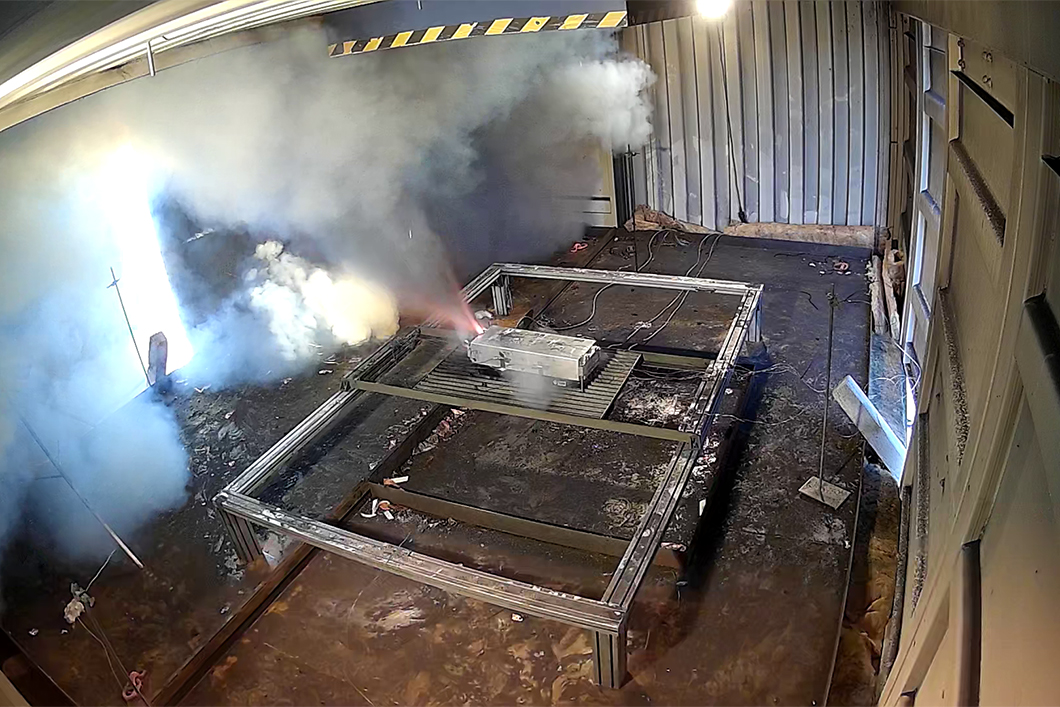
Thermal runaway of a 6.85-kWh-module containing NMC pouch cells
Source: BAM FB 2.1
One main challenge of the energy transition is the short-term intermediate storage of electrical energy. A possible solution is the use of stationary energy storage systems based on lithium-ion batteries. Second-life modules, which have previously been used in automotive applications, should be mainly used for this purpose for sustainability reasons. However, many safety-related questions have not yet been conclusively answered. For example, if a thermal runaway occurs in a single cell, it is necessary to detect this as early as possible in order to prevent a propagation to neighboring cells or modules. In this context, it is also necessary to clarify how the propagation of a thermal runaway between modules or different storage areas can be effectively prevented. There are further uncertainties with regard to the assessment of stationary battery storage systems in terms of structural fire protection as well as process and plant safety.
Technically well-founded answers to these questions require experimental investigations on a real scale. To this end, a large-scale test stand was developed and set up at the BAM Test Site Technical Safety as part of the BMBF project SEE-2L (Safety of Electrochemical Energy Storage in Second Life Applications, grant number 13N15493).
The article describes the experimental results of the first series of tests. Experiments on thermal runaway were carried out in various sizes, ranging from single cells to modules with an energy content of 6.85 kWh. In order to initiate the thermal runaway, the storage units typically were thermally damaged. In one test, the thermal runaway was initiated by overcharging in order to investigate the influence of the type of initiation mode. In addition to the temperature readings on the modules and in the close environment, the mass burn-up and the composition of the gases emitted were measured. Moreover, the content of hydrogen fluoride in the gases released could be analyzed in situ using a diode laser spectrometer.
The results enable a well-founded assessment of potential risks of battery storage systems during a thermal runaway. Based on this, targeted protective measures can be taken, leading to a higher level of safety for systems installed in the future.
Harmful effects of lithium-ion battery thermal runaway: scale-up tests from cell to second-life modules
Rico Tschirschwitz, Christopher Bernardy, Patrick Wagner, Tim Rappsilber, Christian Liebner, S.-K. Hahn, U. Krause
published in RSC Advances, 2023, Volume 13, Issue 30, pages 20761 - 20779.
BAM Department Process and Plant Safety
BAM Division Safety of Energy Carriers
BAM Department Safety of Structures
BAM Division Technical Properties of Polymeric Materials


